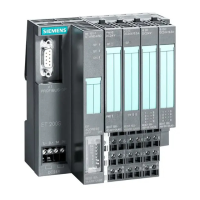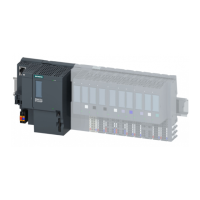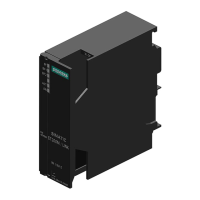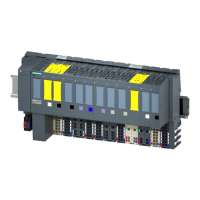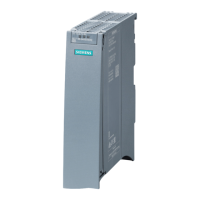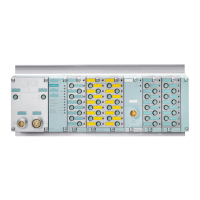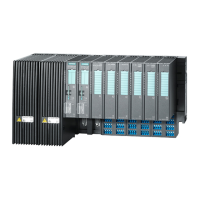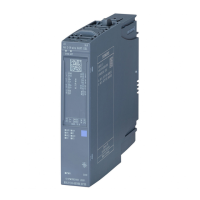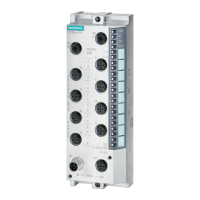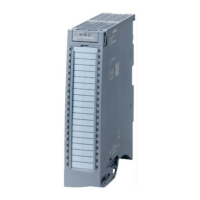Application planning
3.4 Forming potential groups
Distributed I/O system
System Manual, 12/2016, A5E03576849-AG
49
Forming potential groups with fail-safe modules
Introduction
ET 200SP distributed I/O systems can be configured using fail-safe and non-fail-safe
modules. This chapter provides an example of a mixed configuration comprising fail-safe and
non-fail-safe modules.
Example of an ET 200SP configuration with fail-safe and non-fail-safe modules
In principle, it is not necessary to operate fail-safe and non-fail-safe modules in separate
potential groups. You can divide the modules into fail-safe and non-fail-safe potential groups
and install them.
The figure below shows an example of a configuration with fail-safe and non-fail-safe
modules within a single ET 200SP distributed I/O system.
IM 155-6 PN HF interface module
Power module F-PM-E 24VDC/8A PPM ST
Mixed fail-safe and non-fail-safe potential group with BaseUnits BU15..D and BU15..B.
You achieve SIL3/Cat. 4/PLe for the fail-safe modules. No safety category can be achieved
with the non-fail-safe motor starter.
Non-fail-safe potential group with BaseUnits BU15..D and BU15..B
Fail-safe potential group with BaseUnits BU20..D, BU15..B and BU30-MSx.
Through disconnection of the self-assembling voltage bus, and thus of the non-fail-safe mod-
ules, up to SIL2/Cat. 3/PLe is possible.
Self-assembling voltage buses P1/P2
Fail-safe motor starter F-DS HF
Figure 3-5 ET 200SP - example of a configuration with fail-safe modules
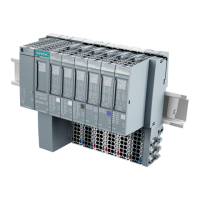
